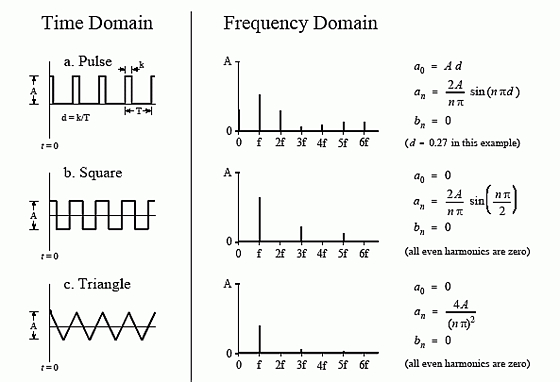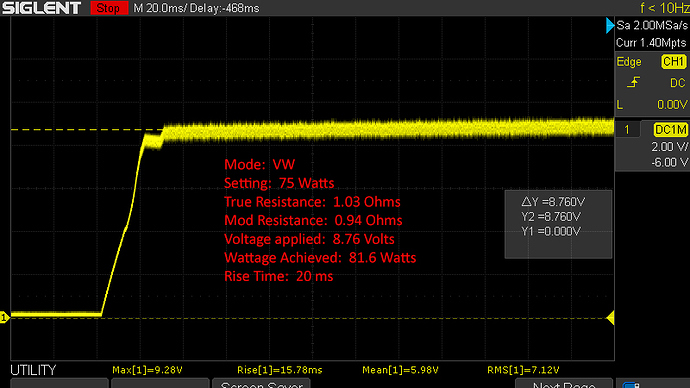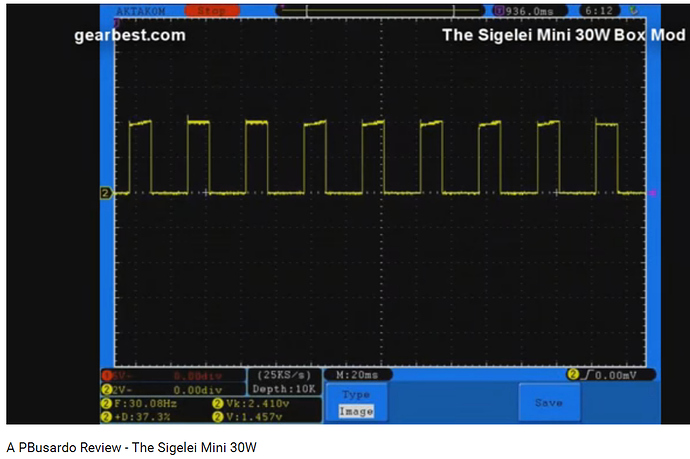It is possible that the pulsing electromagnetic fields affect the flavor. Eliquid is chemically complex and a chemically delicate solution, aged over time, the flavor changes as the dissolved molecules reorganize (steep). With weak bonds, and the big swings in the fields around the heating wire that delicate origination may be changed. I have no idea if thats a reality but I have wondered/suspected it may be.
I’ve always thought it was the zubuzu fields caused by aliens as their space ships enter our ionosphere. As we all know zubuzo fields can cause reverse flux and hole movement in a coil. This makes quarks go crazy and gluons jealous. This is easily fixed however by wrapping your head in tin foil while you vape.
Actually, all kidding aside, I’m sure it’s cow farts causing global warming. Now your coil is no longer at the anticipated ambient temperature as assumed by the mod and obviously will have diminished flavor from overheating. I know every time I’m next to a cow that farts my vape tastes like crap.
Not an electrical engineer w/ ability to dissect op testing but flavors react different at different temps. If what u are describing it behaving more like a real pwm its averaging the watts and the fluctuation varies the temp tho slightly it may help you pick up diff tastes in the same mix. If picking up different tastes in same mix is more pleasant then a good tc mod then count yourself as a pwm mod fan and try one out.
I don’t think @Raven-Knightly knightly is talking about PWM. I could be wrong of course. I think he is referring to the unfiltered “ac ride” or noise produced from boosting circuitry. Every measurement of this ac ride I’ve made has been in millivolt ranges and it’s frequency is way beyond 30cps. I never bothered measuring the frequency but a 30cps signal would have a 38 foot wave length which would have been pretty obvious on the scope. It would appear as flat DC for the time interval of my test.
Here is an example where an Eleaf Pico X is boosting across a 1.03 Ω load. The ac ride appears as a wide a jagged line across the top of the screen shot. Although the time divisions do not show in the screen shot you can see the resolution by the 20ms rise time of the signal.
More research (and perhaps some detailed speculations) on my part to come (regarding low-pass filtering).
I apologize if my original post on this thread was unclear. It is the existing (and measured as 1.9 Vrms for a Sigelei-displayed coil-drive voltage of ~3.0 Volts DC into ~1.5 Ohms load) variations of the instantaneous coil-load power when using the Sigelei 30 Watt Mini - not the much more recently designed/manufactured eLeaf Pico 25 - that interests me (in regards to preferred flavor on the Sigelei when using the same RTA at the same time/conditions). There do seem to exist notable (and very much repeatable) differences (to me).
There is no doubt that the Sigelei 30 Watt Mini uses PWM modulation with an ~30 Hz (fundamental) repetition-rate. The mode itself is called “PWM” (on display and in the user-manual). Have a look at the oscilloscope display shown (in PWM mode) here in this PBusardo review (PWM Mode at ~5 Watts shown):
Since we may sometimes be measuring voltage as well as current, let’s (instead of “current”) call the “C” in “AC” and “DC” an alternate name of “component”. There is a “direct component” (DC) with energy at zero frequency (the “DC bias value”). There is (additional) energy that exists at the fundamental (lowest) frequency (in this case, ~30 Hz) as well as at odd-numbered (and as well potentially even-numbered) harmonic multiples of that fundamental-frequency. What an AC RMS meter measures is the effective heating value of the summation of all of the alternating components (at non-zero frequency). The “DC bias” component (if also present) is blocked by the AC RMS meter. Below are graphic diagrams of the frequency spectrum (including zero-frequency) of a 50% duty-cycle square-wave (with odd-numbered harmonic energy only) as well as a “pulsed” waveform (shown as having some energy at zero-frequency, which is “DC bias”):

The “DC bias” (zero-frequency, constant) component derives from (heavy) averaging of the (varying) data. This is what occurs when the DC Volts mode of a multi-meter is used. AC Volts mode (whether using average, or actual RMS method) measures only variations. RMS represents actual resistive heating value resulting from the variations of the time-domain coil-drive voltage/current (as opposed to a heavily averaged “DC bias” measurement, which reports an averaged approximation of any existing “DC polarity bias”).
The ~1.9 Volt alternating component that I measure which is present (across a ~1.5 Ohms resistive load) when the Sigelei displays ~3.0 Volt DC coil-drive is of a significant numerical value (relative to the ~3.0 Volts DC value displayed). ~2.407 Watts total of (alternating) components ((1.9)^2)/1.5) = 2.407. To be expected (using this 30 Hz repetition-rate PWM). The important thing is the coil-wick interface temperature variations.
I do not have a thermocouple with which to attempt to make temperature measurements on or around a wicked and operational (single) coil. Three issues would seem to exist as “confounders” with such pursuits:
Good thermal coupling between the thermocouple probe and coil under test is quite hard to achieve;
The mass of the thermocouple leads is significantly larger than that of the coil assembly measured;
The down-stream electronics in the test-gear is likely to (itself) include low-pass filtering (averaging).
.
(Of course), many readers may well “know all of the above facts” [about AC(rms) and DC-bias, etc]. 
Way over my knowledge-level where it comes to the “electromagnetic field” angle. From a tad of reading, Oxygen (when existing as O2, anyway) is “paramagnetic”. None of the other expected organic elements (Hydrogen, Carbon, Nitrogen) have near the magnetic susceptibility that Oxygen has. Can someone explain the proposed mechanism(s) involved ? If not, I’ll for now stay with coil-wick temperature over time analysis.
.
Any observations by others of noted differences between funky old (30 Hz, or some low frequency) PWM and snazzy new DC-DC conversion rigs (showing very low coil-voltage variations on oscilloscope scans) ? To keep things simple, I am referring to mod usage in Power Control mode only, utilizing same RTA/RDA.
Went back to an earlier post of mine regarding 10-90% rise-times of temperature at the coil-wick interface, and to some data collected pertaining to some measured temperature increases under specified conditions:
Source: https://www.ncbi.nlm.nih.gov/pmc/articles/PMC5502764/
The -3 dB bandwidth (in Hz) for a first-order low-pass filter represented by a real pole in the S-plane, which is the case for all poles describing heat flow is approximately equal to [0.35 divided by (10-90%) rise-time].
Using a (roughly estimated) ~3.5 Second 10-90% temperature rise-time (in the case of my RTA, ~1.5 Ohm coil, ~6.0 Watts), one gets a (-3dB) low-pass filter bandwidth of ~ 0.1 Hz. This would produce an attenuation factor of ~300 (~50 dB) at the fundamental frequency of 30 Hz, with the attenuation-factor of the harmonic multiples of 30 Hz (also present) increasing further in proportion to the harmonic-number (ie, 2, 3, 4, … etc) - reducing estimated coil temperature variation magnitudes (at various individual frequency components involved, and/or when considered in summation in time-domain) to seemingly low numerical values, indeed.
Despite the previously mentioned difficulties and errors associated with thermocouple measurements, the above numbers would seem to strongly support SmilingOgre’s statement (appearing above in this thread):
Any ripple that I’ve noted using an oscilloscope has been mitigated by the coil flux and the delta temp/time of the coil.
.
That leaves me wondering. The truth must be out there. Meet you under Tinfoil Domes at dawn on Equinox. My internal nerd notes the only known remaining difference to be that of individual mod body thermal heat-sinking characteristics (much more heat-sinking mounted on the Sigelei than appears to exist when mounted on the Pico) - but that seems only distantly related to the energized coil-wick interface region temperatures. One could hypothesize that this heating-sinking keeps the e-juice in the RTA “cooler”. However, inter-mod differences noted seem immediate and constant in nature - and not a gradually evolving characteristic. 
I admire your tenacity regarding research. I have also witnessed the differences in vape by simply changing mods… Can’t give you a cause. I’ve never pursued the issue. I can achieve a fairly decent connection between a thermal couple and the coil but the reaction time of the couple and meter negate any time measurement that would assist in working with this theory. IMHO your on the right track and considering the critical variables.
I want to say it i s a change between recipes and set ups… the way I mix, and you mix even tho they might be the same recipe… it is the how each of us do it… one drop could push a recipe one way the other… one coil vs the next… a simple loop or the squeeze of a screw… 
It’s simpler than that, Smoky. Same RTA at (what is essentially) the same time - mounted on two mods. The distinct differences in flavor between the (Sigelei and Pico) mods are immediately and repeatably evident.
@Raven-Knightly, of course… even like I said… a kink in a coil… manufactured juice is also just like diy ejuice… go over a bit… or under a bit on the recipe… nothing is exactly the same… wish it was…
plus you are talking 2 different mods… even at the same watts/tc what ever you are doing… you will still get different results…
I don’t think that is what @Raven-Knightly is experiencing but totally agree with you. Slightest change in protocol will effect the flavor per my experience.
It is odd and its a clue as to why you and I both could vape the same juice, same set up…
and still get… different results…
its also body chemistry…
Well, The Buddha (et al) did say that no moment ever repeats - each is entirely unique. But really now, the same mod back and forth on two mods in Power mode set to the same Watts. What I am doing in the testing noted is reducing (not infinitely multiplying) the number of variables. Am trying to crack the “black box” - reductionism as opposed to mysticism …  … The subjective aesthetics (in the short term) must have some consistency ? This is not a subtle and variable effect. It stares (me) in the face each and every time.
… The subjective aesthetics (in the short term) must have some consistency ? This is not a subtle and variable effect. It stares (me) in the face each and every time.
You should if you are just taking your rda off and putting it on something else set to the same settings as older/other mod… be getting close to the taste…
Im wondering for you, if you stick the rda back on the old mod… does it still taste the same as when you had it on, from switching to the other mod? make sense??
I recently discovered yeah check this… Same juice… one with reg nic, one with nic salts, one with zero nic… keep this in mind…
I snagged the simple ex (vandy vape) and I have a pulse rda bf on just a vape storm (cheap mod) and all 3 have their own differences in tastes… and out of it all the zero nic to me now tastes better… not sure if it is because I am on week 3 of no nic at all or? but thought I needed some nic salt this morning… and I was sooo wrong! it did not taste good at all… 3mg same juice on the rda tho… was stout… and the zero was the best…
Flavor comparisons just rule! ![]()
I should probably know better than to be insufflating my "Frilly Dancing Elfin Gumdrops Magnum Enchantment Juice” - a brew so transcendently ethereal that it defies all explanatory narratives. 
Wut?! You have "Frilly Dancing Elfin Gumdrops Magnum Enchantment Juice” ?? 
Just bring some to my  you can use your
you can use your  or a
or a  to get over here and let me try this and then I can actually see what it is you are
to get over here and let me try this and then I can actually see what it is you are  messing with
messing with 
btw… your compounds might escape before you get here! 
Yes, but The Nine firmly require that all devotees first cleanse their chakra channels with a strict diet of "Free Range Non-GMO Corned Beef Shanks” before attempting “omni-dimensional enlightenment”. ![]()

Schematic diagram showing the detailed and intricate inner workings of the Sigelei Mini 30W
I think I like the Nine better than my doctor. Says I can not have any meat that hangs over my hand…
and here I just wanted a big fat rib eye, cooked low and slow on the grill after a good marinade… ![]()
Me thinks you has digressed on this tho… bounces flavors around like air massages would be good… but atm I am stuck like Chuck with a York peppermint paddy attempting to vape it all before it melts in the heat of my car… vroom vroom! ![]()


